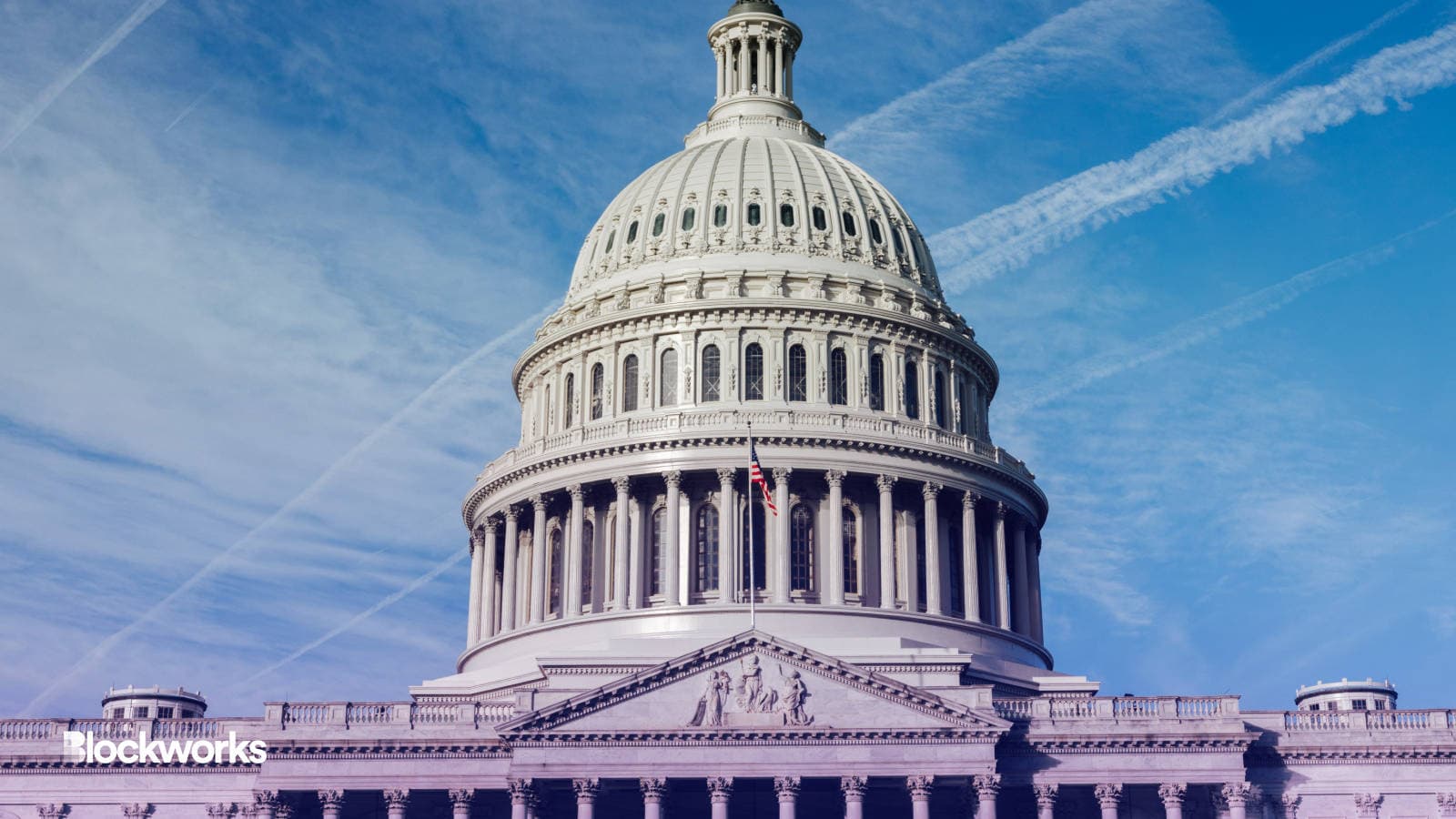Draft Stablecoin Bill Threatens Illegal Issuers With Up to 5 Years Prison
A draft stablecoin bill in the US is pushing for strict rules around the issuance of dollar-pegged digital assets

Dennis Diatel/Shutterstock, modified by Blockworks
The US House Financial Services Committee has published a draft bill on stablecoin regulation ahead of a Wednesday hearing.
A subcommittee on digital assets, financial technology and inclusion will meet this week to discuss crypto in a session titled: “Understanding Stablecoin’s Role in Payments and the Need for Legislation.”
The conversation is likely to touch on the 73-page draft bill, published over the weekend, which seeks to create greater oversight of stablecoins after the multi-billion collapse of TerraUSD (UST) last year.
The bill would require stablecoin providers to maintain reserves backing their coins on an “at least one-to-one basis.”
The reserves could be made of US currency, central bank reserve deposits, Treasury bills with a maturity of 90 days or less and certain repurchase agreements backed by Treasury bills with the same maturity period. Top stablecoins such as tether (USDT), USD Coin (USDC) and Binance USD (BUSD) essentially follow that model.
New York State Department of Financial Services Superintendent Adrienne Harris, Circle’s head of global policy Dante Disparte, Blockchain Association’s chief policy officer Jack Chervinsky are among those who will testify.
The bill seeks to take the stability of the US financial system into consideration — and the needs of the community — when approving stablecoin regulators.
If it’s formally introduced (and passes), the Federal Reserve’s board of governors would be given oversight of non-bank entities looking to issue stablecoins. Entities which issue stablecoins without being granted approval from regulators could face a $1 million fine or prison time of up to five years.
Algorithmic stablecoins not welcome
The bill is shooting for a two-year moratorium on the issuance of “endogenously collateralized stablecoins” which haven’t already been created.
Such a stablecoin refers to any digital asset “in which its originator has represented will be converted, redeemed, or repurchased for a fixed amount of monetary value” and “relies solely on the value of another digital asset created or maintained by the same originator to maintain the fixed price.”
Unlike popular offerings USDT and USDC, UST wasn’t backed by other assets. The failed ‘algorithmic’ stablecoin instead relied on arbitrage via a secondary token, LUNA, to derive its dollar-value.
The bill also seeks to direct the Fed’s board and the Financial Crimes Enforcement Network to study the impact of a US central bank digital currency on its monetary policy tools, the country’s financial and banking sector and cross-border payment ecosystems.
Circle CEO Jeremy Allaire weighed in on the bill, saying in a tweet Saturday that the bill was comprehensive, but “there are clearly open and challenging issues with the bill as proposed, and now is the time for our country and political leaders to really dig in and get this right. The role of the dollar in the world is at stake.”
Wednesday’s discussion will follow another hearing attended by the full House Financial Services Committee with SEC Chair Gary Gensler on the agency’s regulatory developments and rule making.
Get the news in your inbox. Explore Blockworks newsletters:
- The Breakdown: Decoding crypto and the markets. Daily.
- 0xResearch: Alpha in your inbox. Think like an analyst.






